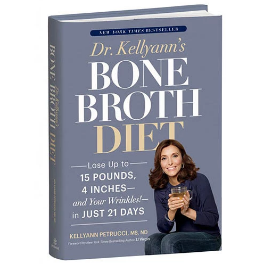
How To Start Keto Diet: Step-by-Step
The ketogenic diet is more than just a trend; it's a lifestyle choice that can lead to profound health benefits and personal transformation. As you consider starting your keto journey, this guide will serve as your trusted companion, offering a structured, step-by-step approach to help you navigate the complexities of this low-carb, high-fat diet. From meal planning to understanding the science behind ketosis, you'll find everything you need to embark on a successful keto journey, whether you're aiming for weight loss, improved metabolic health, or enhanced cognitive function.
What Is The Keto Diet?
Often referred to as ketogenic, or keto, the low-carb, high-fat diet is meant to change the body's metabolism from depending mostly on glucose to using fat. The body moves into a metabolic state known as ketosis—where it becomes quite efficient in burning fat for energy—by drastically lowering carbohydrate intake and raising fat consumption. Along with ketones, which the brain uses as another fuel source, this process generates Among health-conscious people, athletes, and those with particular health goals, the ketogenic diet is a well-known alternative for its possible advantages—weight loss, better blood sugar control, enhanced mental clarity, and higher energy levels.
Why Is The Keto Diet So Popular?
- Effective Weight Loss: The ketogenic diet is celebrated for its ability to promote rapid and sustainable weight loss by encouraging the body to burn fat for fuel, which appeals to those seeking efficient weight management solutions.
- Improved Metabolic Health: By reducing carbohydrate intake, the keto diet helps stabilize blood sugar levels and improve insulin sensitivity, making it an attractive option for individuals managing diabetes or prediabetes.
- Enhanced Mental Clarity and Focus: Many followers of the keto diet report improved cognitive function and mental clarity, as ketones provide a steady energy source for the brain, reducing the fluctuations associated with glucose metabolism.
- Increased Energy and Endurance: Athletes and fitness enthusiasts are drawn to the keto diet for its potential to enhance endurance and energy levels, as the body becomes adept at utilizing fat stores for prolonged physical activity.
- Versatility and Flexibility: The keto diet's adaptability to various lifestyles and dietary preferences, along with its potential health benefits, makes it a popular choice for a wide range of individuals, from busy professionals to biohackers seeking longevity.
How To Start Keto Diet: Step-by-Step
Understand the Basics
Begin by familiarizing yourself with the fundamental principles of the ketogenic diet. This involves understanding how reducing carbohydrates and increasing healthy fats can shift your body into a state of ketosis, where fat becomes the primary energy source. Grasping these basics will provide a solid foundation for your keto journey.
Calculate Your Macros
Determine your macronutrient needs by calculating the ideal ratio of fats, proteins, and carbohydrates for your body. Typically, a ketogenic diet consists of approximately 70-75% fat, 20-25% protein, and 5-10% carbohydrates. Tailor these percentages to fit your specific health goals and lifestyle requirements.
Plan Your Meals
Create a meal plan that incorporates a variety of keto-friendly foods, ensuring you maintain a low intake of carbs high-carb foods. Focus on high-quality fats like avocados, nuts, and olive oil, moderate protein sources such as bone broth, fish and poultry, and low-carb vegetables like leafy greens. Planning your meals in advance will help you stay on track and avoid the temptation of high-carb foods.
Stock Your Kitchen
Prepare your kitchen by stocking up on keto essentials. Clear out high-carb items and replace them with keto-friendly alternatives. Having the right ingredients on hand will make it easier to prepare meals and snacks that align with your dietary goals.
Monitor Your Progress
Track your progress by keeping an eye on your ketone levels, weight, and overall well-being. Use tools like ketone test strips or a blood ketone meter to measure your state of ketosis. Regular monitoring will help you make necessary adjustments to your diet and ensure you're moving towards your health objectives.
Stay Hydrated and Supplement
Ensure you stay hydrated by drinking plenty of water, as the ketogenic diet can lead to increased water loss. Consider supplementing with electrolytes, such as sodium, potassium, and magnesium, to maintain balance and prevent common side effects like the "keto flu."
Seek Support and Resources
Join keto communities or seek guidance from nutritionists and dietitians who specialize in the ketogenic diet. Engaging with others on the same journey can provide motivation, support, and valuable insights to help you succeed.
What Happens In The First Week of Keto?
During the first week of transitioning to a ketogenic diet, your body undergoes significant metabolic changes as it begins to shift from using glucose to burning fat for energy. This period, often referred to as the "keto adaptation" phase, may involve experiencing symptoms commonly known as the "keto flu," which can include fatigue, headaches, irritability, and nausea as your body adjusts to a lower carbohydrate intake. As glycogen stores deplete, you may notice a rapid initial weight loss, primarily due to water loss. It's crucial to stay hydrated and maintain electrolyte balance during this time to alleviate symptoms and support your body's adaptation to ketosis. Despite these initial challenges, many individuals start to feel increased energy and mental clarity as they progress through the first week.
What Should I Eat The First Week Of Keto?
- Leafy Greens and Low-Carb Vegetables: Incorporate plenty of leafy greens like spinach, kale, and arugula, along with other low-carb vegetables such as broccoli, cauliflower, and zucchini. These provide essential nutrients and fiber while keeping carb intake low.
- Healthy Fats: Focus on consuming healthy fats from sources like avocados, olive oil, coconut oil, and nuts. These fats are integral to the ketogenic diet as they will be your primary energy source and help you stay satiated throughout the day.
- Moderate Protein: Include moderate amounts of protein from high-quality sources such as bone broth, eggs, poultry, fish, and grass-fed beef. Protein is crucial for muscle maintenance and overall health but should be consumed in moderation to maintain ketosis.
- Full-Fat Dairy: Opt for full-fat dairy products like cheese, cream, and Greek yogurt, which are rich in fats and low in carbs. These can add flavor and variety to your meals while supporting your dietary goals.
- Keto-Friendly Snacks: Prepare or purchase keto-friendly snacks like nuts, seeds, and cheese sticks to have on hand for when hunger strikes. These snacks can help you avoid high-carb temptations and maintain your energy levels throughout the day.
How Do You Transition To Keto Without Feeling Overwhelmed?
Transitioning to a ketogenic diet without feeling overwhelmed involves taking a gradual and strategic approach. Start by educating yourself about the keto lifestyle, understanding the principles of low-carb, high-fat eating, and setting realistic goals. Begin by slowly reducing your carbohydrate intake while increasing healthy fats, allowing your body to adjust over time. Planning and preparing meals in advance can alleviate stress and ensure you have keto-friendly options readily available. Additionally, seek support from online communities or friends who are familiar with keto, as they can offer encouragement and practical tips. By focusing on small, manageable changes and celebrating your progress, you can ease into the keto diet with confidence and clarity.
Should You Ease Into Keto or Go All-In?
Deciding whether to ease into keto or dive in all-in depends on your personal preferences, lifestyle, and health goals. Easing into keto can be beneficial for those who prefer a gradual transition, allowing the body to adapt slowly to reduced carbohydrate intake and minimizing potential side effects like the "keto flu." This approach can make the diet feel less restrictive and more sustainable in the long term. On the other hand, going all-in can lead to quicker results and may be suitable for individuals who thrive on making decisive changes and are prepared to manage the initial adjustment period. Ultimately, the best approach is the one that aligns with your comfort level and supports your commitment to achieving your health objectives.
How Long Does It Take To Enter Ketosis?
Entering ketosis typically takes anywhere from two to seven days on a ketogenic diet, depending on various factors such as your metabolic rate, level of physical activity, and carbohydrate intake. When you significantly reduce your carbohydrate consumption, your body begins to deplete its glycogen stores, prompting a shift to burning fat for fuel. This metabolic transition leads to the production of ketones, signaling that you have entered ketosis. Factors like individual metabolism, adherence to the diet, and physical activity levels can influence the speed at which you reach this state. Monitoring ketone levels through urine strips or blood tests can help determine when you've successfully entered ketosis, allowing you to adjust your diet and lifestyle as needed to maintain this fat-burning state.
What Foods Should I Avoid On Keto?
- Sugary Foods and Beverages: Avoid items high in sugar such as cookies, candies, sodas, fruit juices, and desserts, as they can quickly increase your carbohydrate intake and disrupt ketosis.
- Grains and Starches: Steer clear of grains like wheat, rice, oats, and corn, as well as starchy foods like potatoes and pasta, which are high in carbohydrates and can prevent your body from entering ketosis.
- High-Carb Fruits: Limit fruits that are high in natural sugars, such as bananas, grapes, and apples, as they can contribute to excessive carb consumption. Opt for low-carb fruits like berries in moderation.
- Legumes and Beans: Beans, lentils, and chickpeas are rich in carbohydrates and should be avoided or minimized on a keto diet to maintain a low-carb intake.
- Processed Foods: Many processed foods contain hidden sugars and unhealthy additives that can interfere with ketosis. Focus on whole, unprocessed foods to ensure you stay within your carb limits and maintain optimal health on a ketogenic diet.
What Are The Signs That Your Body Is In Ketosis?
When your body enters ketosis, several signs can indicate this metabolic state. One of the most noticeable is a distinct change in breath odor, often described as fruity or metallic, due to the presence of acetone, a type of ketone. You may also experience increased energy levels and mental clarity as your brain utilizes ketones for fuel. Additionally, a reduction in appetite and cravings is common, as ketones help regulate hunger hormones. Some individuals notice a rapid initial weight loss, primarily from water, as glycogen stores are depleted. Monitoring ketone levels through urine strips, breath analyzers, or blood tests can provide confirmation of ketosis, offering a more precise measure of your body's adaptation to this fat-burning state.
How Much Water and Electrolytes Should You Consume?
On a ketogenic diet, maintaining proper hydration and electrolyte balance is crucial due to the body's increased excretion of water and minerals. It's generally recommended to drink at least 2.5 to 3 liters (about 85 to 100 ounces) of water daily, though individual needs may vary based on factors like activity level and climate. In addition to water, replenishing electrolytes is essential to prevent symptoms like fatigue and muscle cramps. Aim to consume around 3,000 to 5,000 mg of sodium, 3,000 to 4,000 mg of potassium, and 300 to 500 mg of magnesium per day. These can be obtained through dietary sources such as salt, leafy greens, nuts, and seeds, or through supplements if necessary. Adjusting your intake based on personal needs and monitoring how your body responds can help maintain optimal hydration and electrolyte levels.
Common Mistakes to Avoid When Starting Keto
- Not Eating Enough Fat: One of the most common mistakes is not consuming enough healthy fats, which are essential for maintaining energy levels and achieving ketosis. Ensure your diet includes ample sources of high-quality fats like avocados, nuts, and olive oil.
- Neglecting Electrolytes: Failing to replenish electrolytes such as sodium, potassium, and magnesium can lead to symptoms of the "keto flu." Incorporate electrolyte-rich foods or supplements to maintain balance and prevent fatigue and muscle cramps.
- Overeating Protein: Consuming too much protein can interfere with ketosis, as excess protein can be converted into glucose through gluconeogenesis. Stick to moderate protein intake to ensure your body remains in a fat-burning state.
- Ignoring Hidden Carbs: Many foods contain hidden carbohydrates that can add up quickly and hinder your progress. Carefully read labels and be mindful of carb content in sauces, dressings, and processed foods.
- Lack of Planning: Starting keto without a clear plan can lead to poor food choices and frustration. Take the time to plan meals, stock your kitchen with keto-friendly ingredients, and prepare snacks to stay on track and avoid high-carb temptations.
Conclusion
In conclusion, the ketogenic diet is more than just a dietary change; it's a lifestyle shift that can lead to profound health improvements and personal growth. By understanding the science behind keto, setting realistic goals, and maintaining a flexible approach, you can successfully integrate this diet into your life. The journey may present challenges, but with determination and the support of the keto community, you can overcome obstacles and thrive. Embrace the process, celebrate your progress, and let the benefits of ketosis guide you toward a healthier, more vibrant future.
Final Thoughts
Are you searching for a flavorful addition to your low-carb or ketogenic diet? Dr. Kellyann's premium bone broths, available in chicken, beef, and French onion varieties, offer the perfect solution. Packed with collagen, non-GMO, and sugar-free, these broths are excellent for fasting and enhancing recovery. Discover Dr. Kellyann's wide range of wellness products to elevate your health and vitality journey.
Sources









